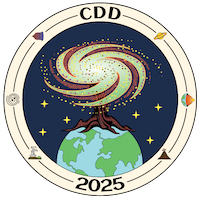Orateur
Description
In France, groundwater is one of the main resource for industry, agriculture, and drinking water.
As severe droughts affecting groundwater become more frequent,
the development of forecast has become essential for stakeholders.
The hydro-meteorological platform Aqui-FR (Vergnes et al., 2020), which gather
different groundwater models, is coupled with atmospheric reanalysis and downscaled seasonal forecasts
(Willemet et al., 2022) to achieve this goal.
However, due to the lack of observations of subsurface parameters, uncertainties in such models can remain high.
This often leads to bias (difference between observations and simulations) or poor representation of process dynamics.
Such errors degrade the estimation of the state variable used to initialise the forecast and
propagate errors in the forecast itself.
To overcome these issues, a data assimilation (DA) scheme, based on the Ensemble Kalman Filter (EnKF ; Evensen et al. (1994))
has been developed within the Aqui-FR workflow.
By using measured observations in combination with a dynamical system model, derives an optimal estimate of the system states, together with an uncertainty estimate.
Here, the analysis focuses on hydrological state variable estimation, and more specifically on piezometric (groundwater) levels.
In situ piezometric data from monitored wells are assimilated into a hydrological model,
that uses the hydrogeological computer code MARTHE (Thiéry, 2020) to simulate both piezometric levels
and river discharge, at regional basin scale.
First results obtained from numerical experiments show the benefit of DA on groundwater state estimation
with a regional model (mean RMSE reduced from 4.26 to 0.32), even with spatially sparse data. When assimilation is
stopped, the analysis shows an impact on state estimation up to a seasonal time step (mean RMSE about 2.9 after 180
days without assimilation), which is encouraging for forecast improvements. However, in regions of the model domain where
initial calibration is too poor, the correction shows less persistence and the dynamics of the model appears to be driven
by parameters rather than initial conditions. To improve the piezometric estimation in these areas, we plan to implement a two
step DA with parameter estimation before state estimation.
Evensen, G. 1994. "Sequential Data Assimilation with a Nonlinear Quasi-Geostrophic Model Using Monte Carlo Methods to Forecast Error Statistics". Journal of Geophysical Research: Oceans 99(C5):1014362. doi: 10.1029/94JC00572.
Thiery, D. 2020. Guidelines for MARTHE v7.8 computer code for hydro-systems modelling. BRGM/RP-69660-FR. Orléans, France: BRGM.
Vergnes, JP, N. Roux, F. Habets, P. Ackerer, N. Amraoui, F. Besson, Y. Caballero, Q. Courtois, JR de Dreuzy, P. Etchevers, N. Gallois, DJ Leroux, L. Longuevergne, P. Le Moigne, T. Morel, S. Munier, F. Regimbeau, D. Thiery, and P. Viennot. 2020. "The AquiFR Hydrometeorological Modelling Platform as a Tool for Improving Groundwater Resource Monitoring over France: Evaluation over a 60-Year Period". HESS 24(2):633-54. doi: 10.5194/hess-24-633-2020.
Willemet, J-M., S. Munier, F. Besson, P. Etchevers, P. Le Moigne, F. Rousset, J.-M. Soubeyroux, Ch. Viel, F. Habets, Ph. Ackerer, N. Amraoui, J.-R. de Dreuzy, N. Gallois, C. Magand, D. Thiéry, and J.-P. Vergnes. 2022. "Aqui-FR: Towards a Hydro-Geological Seasonal Forecasting System for Metropolitan France". in Vol. IAHS2022-525. Montpellier, France: Copernicus Meetings.
| Speaker information | PhD 2nd year |
|---|

